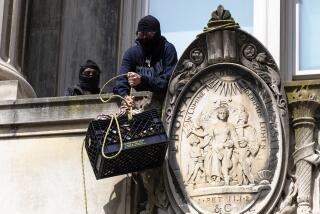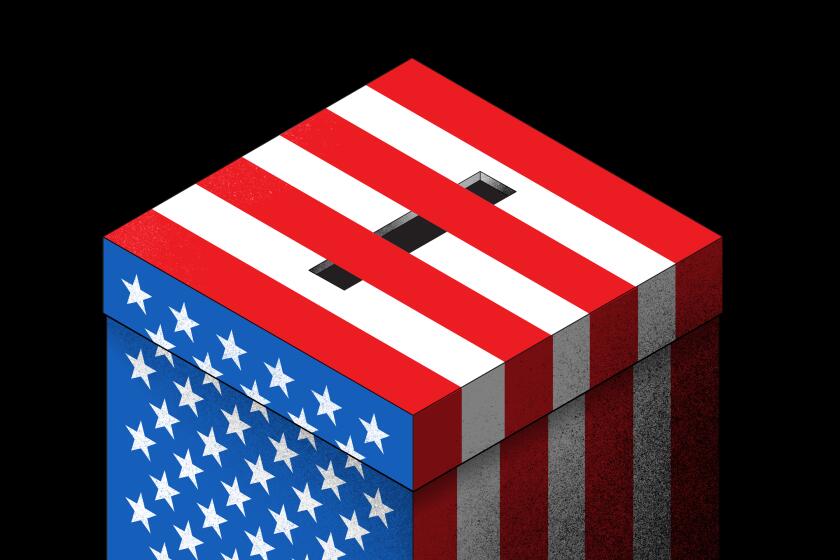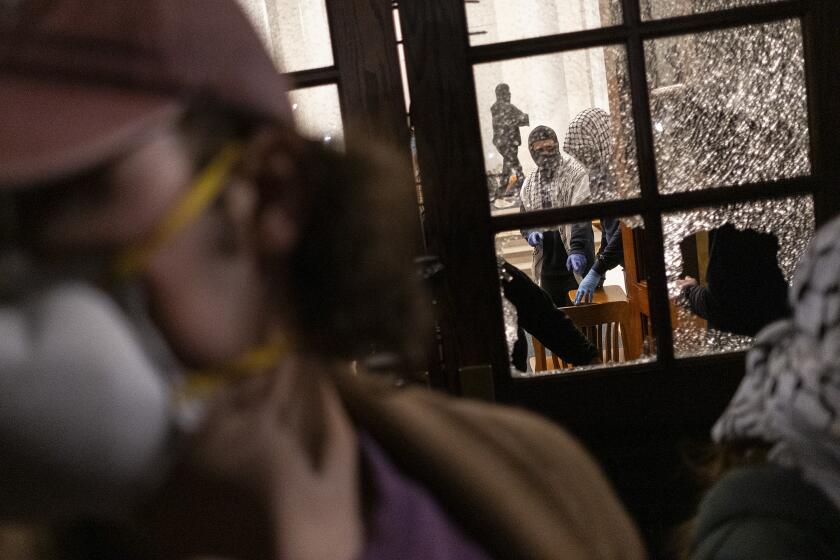Guatemalans Plead for Aid After Disaster
Rescue workers battled with little success Sunday to retrieve bodies buried under 40 feet of mud, while local officials and Maya residents complained bitterly that the federal response to the disaster was slow and inadequate.
Nearly five days after Hurricane Stan triggered massive mudslides that devastated this region, wiping out the entire village of Panabaj and apparently killing hundreds of people, local officials struggled to supply food and shelter to the survivors.
The Guatemalan government on Sunday reported that 519 people have died in the wake of last week’s hurricane and an additional 338 are missing across the country. Nearly 90,000 people are living in shelters, including 3,000 in 31 makeshift camps here.
Maya farmers from neighboring towns used canoes to haul corn, beans and clothes across Lake Atitlan to give to survivors.
“We haven’t received anything from the government,” said Manuel Culan, an assistant to the mayor of this lakeside town in the country’s volcanic western highlands. “Especially we are requesting economic aid that is going to help us to buy some land for these people.”
On Sunday afternoon, men and women stood in line waiting to receive a hot meal of corn, beans and tortillas.
About 2,500 of the refugees were from Panabaj, a coffee-growing community of about 260 buildings that was engulfed by a mudslide early Wednesday. Culan estimated that 500 people may still lie there, many buried as they slept.
Previously, government officials had said up to 1,500 might be dead. So far, about 70 bodies have been retrieved from the area, where exhausted, dispirited-looking local firemen and about 20 rescue workers who flew in from Spain were still searching Sunday night.
With so much time having passed and such a large number missing, there was speculation that efforts would be abandoned in some areas and the sites would become mass graves.
As evening approached, the workers were being careful not to take a wrong step and sink into the quicksand-like muck. Yellow, orange and red sticks planted in the ground guided their movements. Rescue dogs barked as they sniffed for victims.
A vibrant center of Tzutuhil Maya culture, the Santiago Atitlan region is known for maintaining its traditional Indian ways despite outside political pressures and the encroachment of tourism in some villages that ring the picturesque, blue lake.
The region was a rallying place for Indian activism during Guatemala’s 35-year civil war, which left about 200,000 people dead, many of them Maya villagers. The war ended in 1996.
On Sunday afternoon, about 500 people stood in a drizzling rain in the central plaza here while an evangelical pastor, Diego Sesos, urged them to help their fellow Mayas.
“We’re going to be united forever. This incident is going to give us strength,” Sesos, speaking in Mayan, said through a microphone.
Salvador Sapalu, a Maya administrator of an organization that works with poor children here, said the area had not received federal support.
“The only thing you see here, these corn and these beans, those have been provided by the local people,” Sapalu said. “We don’t even have medicines. There are only three doctors for the entire town here. It could be a kind of racism because these people are Indians.”
Some agronomists and land experts have speculated that erosion caused by deforestation and farming on the volcanic slopes might have played a role in the disaster. Deforestation has been rampant throughout Central America, including Guatemala.
“Any form of agriculture runs the potential for destabilization of the soils,” said William W. Shaw, a professor in the school of natural resources at the University of Arizona at Tucson, in a telephone interview. “When it’s on volcanic slopes, that’s a real concern.”
In other parts of Central America and southern Mexico, where Hurricane Stan cut a ruinous swath, cleanup efforts continued fitfully.
Touring devastated communities in the hard-hit southern Mexican states of Chiapas and Oaxaca over the weekend, President Vicente Fox declared the worst of the crisis over. But much like New Orleans after Hurricane Katrina, communities are struggling with overwhelming health, sanitation and security woes.
In the Mexican city of Tapachula near the Guatemalan border, the Coatan River burst its banks last week, obliterating at least 3,000 homes and washing out the four bridges that connect the community with the outside world, said Alfonso Ochoa, a reporter with El Orbe newspaper. He said authorities had found 15 bodies “but those were just the ones found in the streets. We have no idea how many people are dead.”
Ochoa said the city was low on food, potable water, fuel, medicine, warm clothing and other necessities needed to sustain its 300,000 people. He said cartons of eggs that usually cost $1.40 were now selling for four times that when they could be found at all. On Sunday, Mexico City newspapers showed photos of desperate residents scrambling for aid packages tossed from army helicopters.
Ochoa said a couple of government ships had arrived and were unloading supplies. But he said the relief was too little and too slow.
“There is sadness, hunger and desperation,” Ochoa said. “We need more help.” Summing up the devastation to all of Central America and Mexico, Ochoa said, “This is a disaster much greater than in Louisiana, but it isn’t getting the same attention.”
*
Special correspondent Renderos reported from Santiago Atitlan and Times staff writer Johnson from Mexico City. Staff writer Marla Dickerson in Mexico City contributed to this report.
More to Read
Start your day right
Sign up for Essential California for news, features and recommendations from the L.A. Times and beyond in your inbox six days a week.
You may occasionally receive promotional content from the Los Angeles Times.







